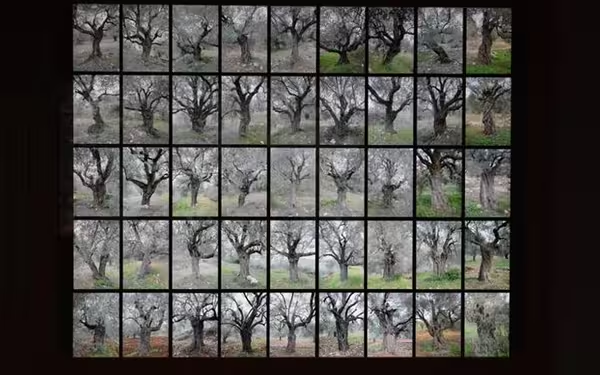Saturday, November 16, 2024 08:55 PM
Lebanese Artist Joe Namy Reflects Resilience Through Art in Amman
- Joe Namy's exhibition highlights Lebanon's cultural resilience.
- Art serves as a response to ongoing conflict and destruction.
- Sound sculptures evoke the fragility of safety in conflict zones.
 Image Credits: menafn
Image Credits: menafnJoe Namy's exhibition in Amman reflects on Lebanon's resilience through art, addressing ongoing struggles and cultural continuity.
In a world often overshadowed by conflict and destruction, art emerges as a powerful medium for expressing resilience and hope. Recently, the Khalid Shoman Foundation in Amman, Jordan, unveiled a moving exhibition by Lebanese artist Joe Namy titled "Until This Elegy Ends." This exhibition serves as a heartfelt tribute to the ongoing struggles faced by Lebanon, highlighting the importance of cultural continuity and the strength of communities amidst adversity.
Running from October 31 to March 31, Namy's exhibition explores themes of endurance and memory through various artistic pieces. Central to the display is Namy's personal connection to his homeland in southern Lebanon, particularly his village of Deir Mimas, where olive orchards have stood for centuries. These trees, often referred to as "family trees," symbolize the deep-rooted ties between people and their land. Namy poignantly remarks, "They have been under threat for generations. Their survival is a testament to resilience; it is not the first time they have stood against violence, and likely not the last."
The title of the exhibition, "Until This Elegy Ends," encapsulates a period of mourning and pain for lost lives while simultaneously suggesting a yearning for an end to this prolonged sorrow. Namy reflects on the importance of responding to current events through art, stating, "As an artist, it is difficult to create without responding to what is happening around us." This sentiment resonates deeply, as art often serves as a mirror reflecting the realities of life.
One of the standout pieces in the exhibition is a sound sculpture that evokes the haunting call of a siren, confronting visitors with the fragility of safety in conflict zones. This sound serves as a reminder of the daily struggles faced by communities living in fear. Collaborating with musicians from the Edward Said National Conservatory of Music, Namy captures sonic testimonies that echo the rich histories of Palestine and Lebanon. He emphasizes, "Sound can carry meanings and memory across generations," highlighting the profound impact of auditory experiences in shaping our understanding of history.
Another significant piece, titled "Family Trees," documents the ecological loss and cultural displacement caused by airstrikes in southern Lebanon. The destruction of these ancient olive trees, some of which have stood for over 2,000 years, reverberates through local communities that rely on them for their livelihoods. Namy's images, taken between 2014 and 2023, reflect his deep personal connection to these orchards, which have become inaccessible due to ongoing violence.
Presenting this work in Amman holds special significance for Namy, who describes the experience as cathartic. He shares, "Bringing these pieces here has been cathartic. In creating this display, I found a channel for my grief, hope, and dedication to the lands and people who continue to endure." This statement underscores the therapeutic power of art, allowing both the artist and the audience to process complex emotions.
Darat Funun, the foundation hosting the exhibition, is dedicated to supporting Palestinian and Lebanese artists, fostering a deeper understanding of the region's artistic voices. The foundation's architecture, housed in historic buildings, symbolizes the interconnected histories of the Levant, including Jordan, Syria, Lebanon, and Palestine. This commitment to regional unity is reflected in the diverse range of exhibitions, including "Under Fire," which features artwork by Gaza-based artists.
Visitors to Namy's exhibition have expressed profound emotional connections to the artwork. One Palestinian visitor, Jana, remarked, "Trees are powerful symbols for us as Palestinians. When we see them in pieces of work, it feels close to home. Olive trees connect us to our land, as they are rooted, enduring, and symbolic of belonging." This sentiment highlights the role of art in bridging personal experiences with collective histories.
In a region where art serves as a witness to both beauty and destruction, "Until This Elegy Ends" exemplifies the vital role of artistic expression in documenting resilience and nurturing the stories of those who have shaped, and continue to shape, the enduring landscapes of the Levantine world. As we reflect on the power of art, it becomes clear that it not only captures the essence of human experience but also fosters a sense of hope and connection in times of turmoil.













